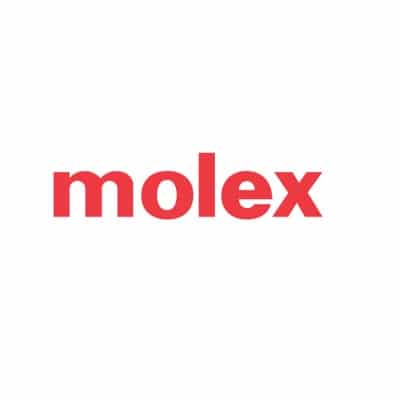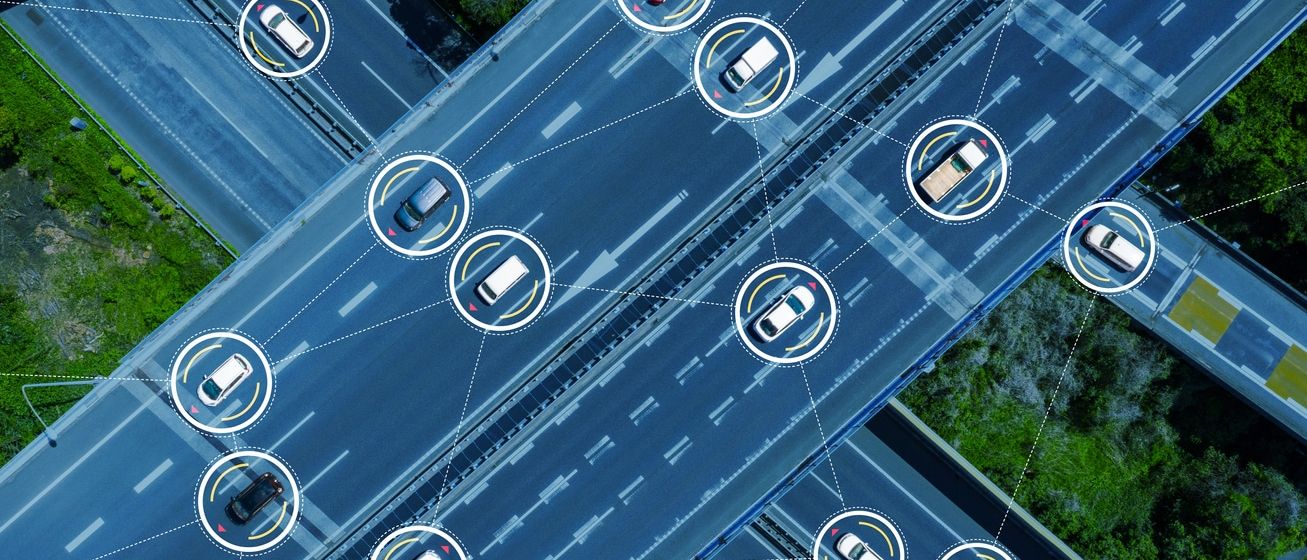
Molex CVS Bochum GmbH (former Laird)
Molex LLC is a manufacturer of electronic, electrical, and fiber optic connectivity systems offering a variety of products including data communications, industrial and automotive electronics.

Live Trial of 5G Connected Car Concept Launches in Blacksburg, Virginia (VA)
The international collaboration of tech leaders and public sector on a live connected car trial will pilot new roaming technology for traffic safety.
March 24th, 2022 – (Blacksburg, VA) On March 24th the Commonwealth of Virginia will host a live trial of new driver and pedestrian safety concept that allows near-real-time notification of roadway hazards through 5G and edge technologies. This trial is one of three conducted internationally by a historic public-private collaboration, organized by the 5G Automotive Association (5GAA) and eight member companies representing leading technology companies from around the globe. A related European live-trial was conducted in the city of Turin, Italy. The North American live trial will be conducted on the Virginia Smart Road operated by the Virginia Tech Transportation Institute in Blacksburg, VA. It is the first of its kind in North America.
“The 5G Automotive Association lives out of cooperation between its members. In this case, eight members led by Intel and Verizon give a perfect example of how we can use connected mobility to increase safety on our roads,” said Maxime Flament, CTO of 5GAA. “5GAA is also global and we are happy that use cases demonstrated here in United States can readily be adapted in any other country supporting 5G and Edge networks.”
5G transmission speeds and so-called “Edge” servers—locally installed, high-powered computers capable of running Artificial Intelligence programs—open the door to smart city technologies like near real-time traffic management and innumerable other business applications. The connected car concept uses this high-speed and Edge computing technology to communicate with car sensors and pedestrian smartphones, via a user-authorized mobile app—about traffic hazards, like accidents and road construction—for Pedestrian and in-vehicle driver safety and efficient navigation.
This live international trial attempts to solve one of the more technical challenges of making the connected car concept a daily reality. The 5G networks underpinning the concept are managed by Communication Service Providers (CoSPs) according to geography, each with different edge solutions that must be able to communicate without interruption of the V2X applications as drivers cross borders. Roaming services—the ability to make a call regardless of the network—is one early success of multi-mobile network operators (MNO). Demonstrating the connected car concept can work in a roaming scenario is the core objective of the live trial and represents the first of any such attempt in the United States.
“Telecom operators will have to play a major role by enabling applications and services for the connected car ecosystem,” says Shamik Mishra, CTO Connectivity, Capgemini Engineering. He further adds: “Capgemini is excited to bring its innovative federated MEC (Multi-Access Edge Computing) platform and applications to this 5GAA trial to demonstrate the true value of intelligent industry, leveraging data in the vehicles and edge-cloud. The trials serve as a stepping-stone for realizing the potential for automakers to provide services to their connected cars from the network.”
The Virginia live trial addresses three objectives:
- Objective 1: Multi-MNO scenario: How can a vehicle, which has radio access to MNO A, use a MEC application, which is operated by MNO B -> Interworking between MNO‘s (by NOT losing the benefits of low latency)
- Objective 2: Global operational Availability: How can an OEM as the MEC application developer be sure, especially on a global basis, that a MEC application works in the same way if it’s operated by MNO A, or if it’s operated by MNO B
- Objective 3: Multi-MNO with roaming scenario: Where the two operators can seamlessly transfer the V2X service from one operator to the other as the car OEM moves from one geo to the other in a roaming scenario. Typically, when an in-vehicle driver does a cross-border travel that involves two operators.
One of the key benefits of the trial is the value demonstrated by bringing in a large ecosystem to help develop not only the technology but also build the business case and model that will help drive the potential market adoption for 5G and C-V2X to help into the digital transformation of smart cities of the future. To succeed in this endeavor, it will need a village and investment from both public and private sectors to help adopt this new technology to provide a quality of life for all citizens.
The demonstration brings new learnings for various players across the value chain and creates a testbed for trying out new 5G connected car services at the Edge in subsequent phases. The U.S. Live Trial will take place in Blacksburg, VA, on March 24th, 2022.
BACKGROUND
In this live trial, Verizon and TELUS are exhibiting the Ultra-reliable low-latency communication (URLLC) 5G networking capabilities, such as hosting Capgemini’s ENSCONCE MEC platform, built upon the Intel Smart Edge Open toolkit, to enable connected car use cases at the edge on Intel Architecture-based EC2 instances on AWS Wavelength. Intel Smart Edge Open (formerly known as OpenNESS) is a royalty-free edge computing software toolkit for building optimized and performant edge platforms.
“Intel is proud to be a leading member of this live trial to build and provision Infrastructure to enhance Connected Vehicle experience in multi-operator scenarios,” said Sameer Sharma, General Manager of Cities & Transportation Business Unit at Intel. “This demonstration shows how cloud service providers and communication service providers can advance road infrastructure deployments at the 5G network edge when powered by Intel technologies. This is just the beginning, as future trial phases will demonstrate additional exciting services”
Capgemini’s ENSCONCE MEC Platform also enables multi-tenancy and multi-MNO MEC federation capabilities based on GSMA Operator Platform requirements and comes with Capgemini V2X Stack built-in support. To realize the Active and Passive Vulnerable Road User (VRU) use cases, the AWS Wavelength EC2 instances are used to demonstrate Virtual-RSU and host V2X applications that are based on the Intel Xeon Scalable Processors. Harman International and Capgemini provide the Virtual-RSU and RSE solutions respectively to realize various V2X use cases with location aware and AI inferencing technologies. Harman also offers a 5G enabled OBU that integrates seamlessly with Stellantis/FCA car and hosts V2X applications. American Tower in collaboration with VTTI is providing the test bed infrastructure at the VTTI intersection where the trial for V-DOT will be performed.
“Since joining 5GAA in 2018, we have worked with public and private partners to help define the ecosystem for scalable cellular-based roadside infrastructure to serve the 5G connected vehicle.” Said Ed Knapp, CTO of American Tower. “By deploying C-V2X in combination with roadside sensors processed at shared multi-access edge computing facilities, also known as MEC4auto, American Tower hopes to enable deployments of seamless multi-operator MEC services to support low latency use cases.”
“The Virginia Tech Transportation Institute (VTTI), along with our Virginia Department of Transportation partners, is excited to support the demonstration of the MEC4Auto solution on the Virginia Smart Roads. The connected car concept provides reliable, low latency communications that can enable a variety of transportation safety use cases. This V2X technology takes a big step towards scalable deployment by demonstrating the seamless transfer of V2X services between operators and geographic locations with no change in performance, functionality, and reliability.” Said Dr. Michael Mollenhauer, Director, Division of Technology Implementation at VTTI.
“The Virginia Department of Transportation (VDOT) has a mission to ensure the safe, efficient, and accessible travel of people and goods across the Commonwealth,” explained Amanda Hamm, VDOT’s Connected and Automated Vehicle Program Manager. “To achieve this mission, VDOT supports innovative solutions and partnerships, like this historic trial, to bring the connected vehicle ecosystem to fruition, as this environment could one day save lives by providing actionable, real-time information to all roadway users so that they better navigate our roadways.”
“Making roads safer for drivers and pedestrians is the ultimate goal of developing these next generation technologies,” said Ned Curic, Stellantis Chief Technology Officer. “The Jeep® Wrangler 4xe plug-in hybrid is the perfect vehicle for these live tests, equipped with vehicle-to-everything (V2X) technologies and driver safety alert. With 5GAA, we are working with industry leaders across the globe to help pave the way for autonomous technology to benefit our products and, ultimately, our customers”
“Verizon 5G Edge with AWS Wavelength brings AWS compute and storage services to the edge of Verizon’s wireless network minimizing the latency and network hops required to connect from an application hosted on AWS to the end user’s device,” said Jyoti Sharma, Senior Manager of Network Planning at Verizon. “Through our partnership with AWS, we are helping customers unlock the true potential of 5G and edge computing which together will enable innovative applications involving computer vision, augmented and virtual reality, and machine learning.”
Connected mobility is quickly becoming a reality, and thanks to ultra-low latency of 5G and power of edge computing, it will deliver on important safety outcomes for everyone on our roads in a near future,” said Ibrahim Gedeon, Chief Technology Officer, TELUS. “TELUS is proud to offer our world-leading connectivity, alongside this prestigious group of partners, in order to realize this trial and maximize our learning for the future.”
“At HARMAN, we are focused on building connectivity solutions at the intersection of 5G, V2X & Edge Computing that will build more equity on the road for all users,” said Mahsa Nakhjiri, Director, Product Management at HARMAN. “While these technologies can unlock many new use cases and experiences, the most important element of any solution in this space is safety. As programs such as this one fueled by the collaboration of industry leaders and organizations like 5GAA bring a new degree of safety to users, they will also lead to a higher level of confidence in autonomous vehicles.”
Source: Harbor Research1.

5G Automotive Association announced as official partner of IMT-2020(5G)
The 5G Automotive Association is glad to announce its partnership with IMT 2020(5G)Promotion Group’s 2021 C-V2X “four-span” (Shanghai, Suzhou and Wu-Xi) demonstration event taking place 19-22 October 2021. The event showcases an array of Cellular-Vehicle-to-Everything (C-V2X) demonstrations in Shanghai, Suzhou and Wuxi in China.
The demonstration fully implemented C-V2X technology based on the domestic IoT standard system. The event supports urban smart transportation vehicle-road collaborative applications, promote the establishment of efficient and safe urban smart transportation. The pilot application practice achieved “cross-chip modules, cross-terminals, cross-vehicles, and cross-safety platforms”interconnection, and 5G empowered intelligent driving.
Demonstrations will feature 5GAA members such as Huawei (Lu Lei, V2V & V2I use cases) in Shanghai and China Mobile (Li Yuan, use cases for efficiency improvement scenarios such as congestion reminders based on infrastructure, intelligent network cloud & edge computing platforms) in Suzhou.
The event is organized in collaboration with China Industry Innovation Alliance for the Intelligent and Connected Vehicles, China Society of Automotive Engineers, China ITS Industry Alliance, China Communications Standards Association, National Technical Committee of Auto Standardization, Innovator (Suzhou) Digital Transportation Industry Investment Co., Ltd and Shanghai International Automobile City Group Co.Ltd and in partnership with 5GAA and German Association of the Automotive Industry (VDA) China Office.
More information on the demonstrations is available below.


5GAA shares latest C-V2X developments at ITS World Congress (Hamburg)
5GAA shares the latest C-V2X developments at ITS World Congress (Hamburg): “5G will have the most revolutionary impact by reducing accidents and saving millions of lives.”
HAMBURG, 13 October 2021 – 5G-powered vehicles are foreseen to hit the market this year in Europe. More and more advanced vehicle-to-everything (V2X) use cases geared towards enhanced road safety, improved traffic efficiency, greener environmental impact and more comfortable driving are being deployed worldwide on a large scale. The 5G Automotive Association (5GAA) and its members showed the latest developments during ITS World Congress in Hamburg.
5G-V2X spearheading the path to automated driving
Today, the 5G-V2X (Vehicle-to-Everything) technology already enables fully connected and automated mobility with LTE-V2X technology. Vehicles and infrastructure can exchange relevant information via LTE-V2X through direct communication mode (not requiring network coverage) or mobile network communications mode, creating a real-time connection between all road users.
Many automotive services can be supported by the current global cellular standard LTE-4G, seen as an essential foundation for further progress. Millions of vehicles on the continent are connected via 4G-LTE already, and industry analysts estimate that over 70% of all new vehicles sold are now 4G equipped. That said, 5G-V2X will enable more advanced connected mobility services and offer a clear path to automated driving – while maintaining service-level interoperability with pre-existing LTE-V2X vehicles.
5GAA will help prepare tomorrow with the ITS Directive revision, advocating a neutral approach on technology. Given the strong momentum in China and in the United-States, Europe needs a future-proof framework to stay in a leading role globally. Indeed, advanced driving is taking shape globally. At the moment, China is the only country that has 5G Cellular-Vehicle-to-Everything (C-V2X) enabled vehicles commercially available on the market. To this date, 14 C-V2X vehicle models are commercialized. In the United States, Ford has committed to deploy C-V2X in all new vehicle models from early 2022. In Europe, 5G-powered vehicles are foreseen to hit the market still this year thanks to BMW.
“When applied to the automotive field, 5G will have the most revolutionary impact by saving millions of lives and reducing accidents on roads”, 5GAA CTO Maxime Flament said. “The combination of long- range and short-range connectivity C-V2X offers, delivers the optimal setup for safety and efficiency of traffic, in addition to improving environmental footprints.” Global deployment of C-V2X technology will have a sustainable impact in the world.
In the next two to three years, 5GAA expects to see mass deployment of C-V2X use cases geared towards improving traffic efficiency and road safety around the world. Vehicle commercialization is not enough however: the whole ecosystem – cars, cloud, map, network, positioning but also the road – needs to be C-V2X friendly. Therefore, 5GAA offers a platform to foster collaboration between top tier automotive, technology and telecommunications companies for them to develop end-to-end connectivity solutions for future mobility and transportation services.
Cover more digital roads via enhanced digital mobility services
At ITS World Congress, the world’s largest and most prominent event focused on smart mobility and the digitalisation of transportation, 5GAA experts and member spokespersons shared their views on how to accelerate deployment of the latest technology innovations and how to ensure future-proof investments. They shared the needs of road operators for their digital infrastructure and of automakers (OEMs) for digital mobility services, and zoomed in on digital roads in urban areas and cooperation models enabling deployment and use of 5G infrastructures for connected and automated mobility.
Furthermore, key members of the 5GAA shared their latest technology developments with a focus on Vulnerable Road Users (VRUs), among which:
- A system that warns of accidents between and help protect connected vehicles and cyclists – or other vulnerable road users such as pedelec, scooter riders and pedestrians developed by Continental and Deutsche Telekom. The solution calculates the paths taken by cars and bicycles. If they are likely to cross at the same time, the system warns both road users via mobile communications in real-time. Initial road tests have been successful.
- A Location-as-a-Service algorithm that improves the positioning of road users, in which vehicles exchange data via simulated communication (5G) by Fraunhofer Institute FOKUS. The aim is to warn drivers of a collision with a cyclist, an e-scooter rider of road damage, or to guide a blind person to the right government office or the bus door – for which highly accurate localization is always of fundamental importance.
- A demonstration of a connected e-bike, where Qualcomm (alongside company Spoke) is showcasing a new hardware solution designed to enable vehicles to identify VRUs using C-V2X.
And more. Request the full list of demonstrations on demand at 5GAA@teamlewis.com
Download the press release here.





5G Automotive Association (5GAA) to participate in the Global Certification Forum (GCF) online conference “C-V2X Certification and the Roadmap to Connected Mobility.”
The 5G Automotive Association (5GAA) is glad to announce its participation to the Global Certification Forum (GCF) webinar “C-V2X Certification and the Roadmap to Connected Mobility” on 6th October 2021, at 4 pm CEST.
The event will bring together industry experts from vehicle manufacturers, equipment vendors, test houses and certification authorities to discuss why certification is key to the effective rollout of C-V2X systems and how it can be implemented successfully now.
Maxime Flament, 5GAA Chief Technology Officer, will hold a session to disclose the current standard landscape and the global market opportunities for connected vehicles. Moreover, he will join a panel discussion on the GCF’s C-V2X certification programme and how it will benefit several actors of the connectivity ecosystem.
High-speed wireless communications between vehicles and infrastructures, especially cellular vehicle-to-everything (C-V2X) communications, are crucial for the development of autonomous vehicles. Proven interoperability between C-V2X devices is essential to ensure the safety and reliability of such systems.
Since 2019, 5GAA and GCF have been collaborating to investigate the principles and framework for a certification programme – designed specifically for C-V2X technologies. A few months ago, the two partners went one step further by signing a new agreement on a programme that will support the drive for interoperability, reliability, and safety of emerging cellular vehicle-to-everything (C-V2X) systems. A programme that will enable manufacturers to certify their C-V2X capable products – including onboard units (OBU) and roadside units (RSU) – for C-V2X PC5 Mode 4 functionality, thus providing a trusted foundation for C-V2X applications globally.
Join the webinar to discover more about the progress to the full interoperability, reliability and safety of emerging C-V2X systems.
More information and agenda of the event here.
Registration here.

Tele-Operated Driving (ToD): System Requirements Analysis and Architecture
Tele-Operated Driving (ToD) technology assists, complements and accelerates semi- and fully automated driving in various scenarios. This 5GAA technical report studies system requirements and corresponding enabler technologies for ToD services using Cellular-V2X (C-V2X) networks. The study covers the vehicle sub-system, ToD operator sub-system, infrastructure sub-system, and C-V2X networks for end-to-end deployment of ToD services. System application layer architectures and the underlying communication network architectures for different ToD use cases and scenarios are presented in this study with the focus on interfaces among different stakeholders and with considerations on service interoperability in multi-OEM, multi-Service Provider, multi-RTA and multi-MNO environments. This study also envisages that market deployment of ToD services will follow a multi-stage roadmap, starting from confined areas, then evolving into dedicated public roads and areas, and finally covering cross-region (long-haul) mobility of automated vehicles.

Tele-Operated Driving (ToD): Business Considerations
The 5GAA cross-working group work item Tele-operated Driving (ToD) aims to describe the requirements and framework needed for remote vehicle operation. The proposed results should reliably enable remote steering and manoeuvring including a human remote driver with both Direct and Indirect Control in an OEM-agnostic, inter-MNO and cross-authority operation. The intention of this work item is to study both use case and scenario definition, technical design, and business considerations. This document focuses on business considerations and aspires to identify the different elements that should be taken into account when considering the deployment of a ToD ecosystem from a business perspective.
Read the full technical report here.

Cross-Working Group Work Item Network Reselection Improvements (NRI)
When user equipment (UE) changes its serving mobile network (e.g. when crossing country borders), an interruption in connectivity can occur as the UE needs to connect to a new network which takes some time, i.e. scanning for a public land mobile network that it can attempt to use or ‘visit’ (hence VPLMN).
These interruptions can often result in disconnected phone calls and/or blackout periods for connected vehicle services lasting up to several minutes. This report seeks to look at this problem and examine the potential solutions available.

Business Aspects and Requirements of 5G Network slicing (BARNS) Report
5G will help vertical industries to achieve the ‘internet of everything’ vision of ubiquitously connected, highly reliable, ultra-low latency services for a massive number of terminals. Network slicing is considered as one of the key features for 5G allowing in particular to support the different needs of various vertical industries, including the automotive industry. Network slicing is a concept for running multiple logical networks (which could be customised and provided with guaranteed Service Level Agreements, SLAs) as virtually independent business operations on common physical infrastructure.
To limit the scope of this work, it will initially focus on the very basic functions of a mobile network, which are to provide coverage, throughput, and latency for data transmission between the vehicle (UE) and a backend infrastructure (i.e. mobile networks) using the network slicing approach. In further steps, the scope of this work shall be extended from how to use network slicing to tackle the additional functional and operational requirements from the automotive industry and their business implications.
Read the full report

Tele-operated Driving (ToD) – Use Cases and Technical Requirements
This work reports the analysis, extension and classification of a set of Tele-Operated Driving (ToD) use cases, with the aim of providing a shortlist, which will serve as a basis for further activities related to technical requirement derivation and business considerations.
The ToD Work Item (WI) aims to describe the requirements and framework needed for ToD service provisioning for automated vehicle operation, covering the possible interfaces and stakeholders. This WI focuses on the tele-operation of vehicles after an incident or in difficult situations (including parking), also potentially taking the network conditions before the incident happened into account.
Read the full report here


